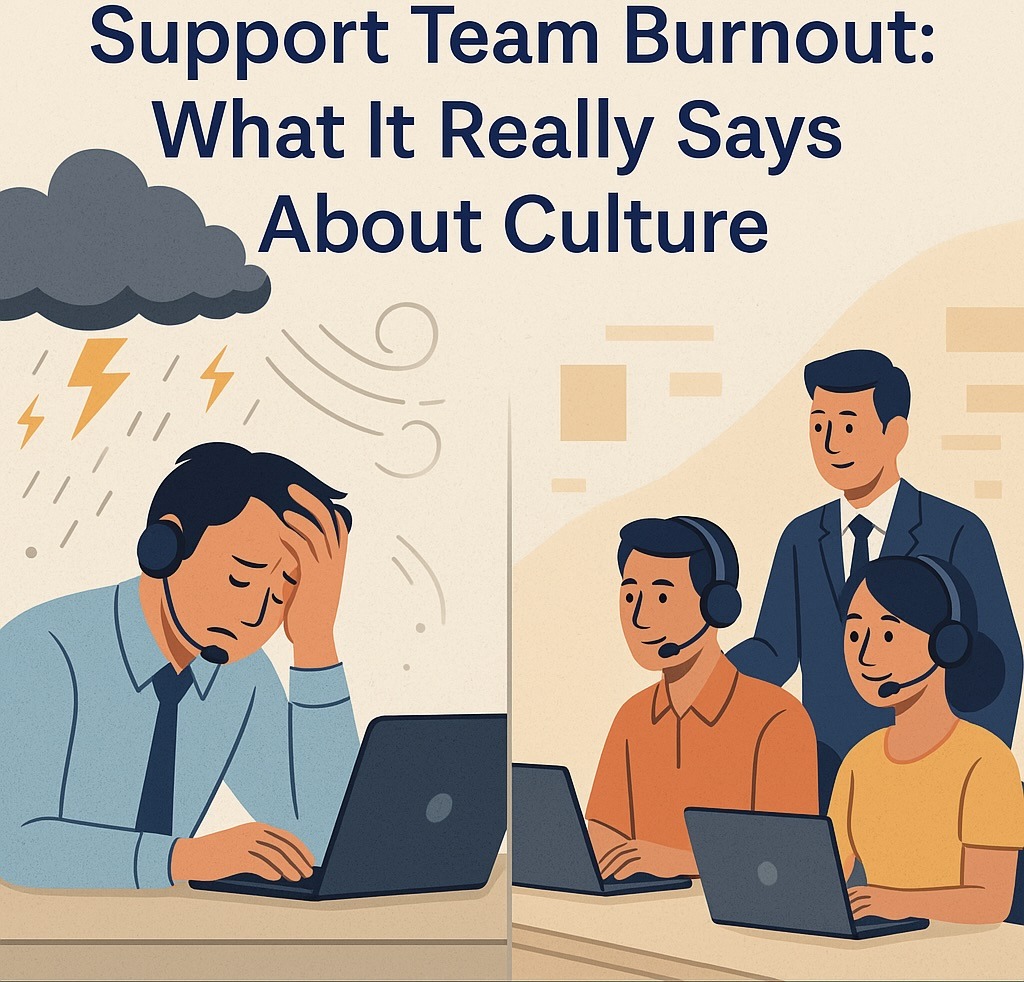
Support teams are often the first to show signs of burnout and it’s not just because they handle a high volume of tickets.
They’re the emotional frontline of your business. They absorb frustration, answer the same questions repeatedly, deal with pressure from both customers and leadership, and often do all of that without a clear seat at the table.
If your support team is running on fumes, it’s rarely just a workload problem. More often, it’s a sign of a deeper issue: your culture.
Why Support Team Burnout Happens First
Burnout isn’t just a symptom of too much work. In customer support, it’s also about how that work is structured, valued and supported.
Support agents regularly deal with emotional labour. Calming angry customers, navigating ambiguity and maintaining professionalism no matter what comes their way. In many businesses, they do all this with little recognition, unclear expectations and inconsistent feedback.
Metrics like “tickets closed” or “time to first response” are used as blunt instruments, ignoring the nuance of what it takes to actually resolve issues. And in teams where leadership hasn’t invested in clear strategy, effective tooling, or psychological safety, agents are left to carry the weight of the organisation’s gaps.
That’s not sustainable and your best people know it.
Burnout as a Cultural Signal
When support teams start to struggle, it’s often a reflection of the environment they’re operating in.
It might look like:
- High churn rates in your support roles
- Increased errors or inconsistent service quality
- A sharp rise in escalations or negative feedback
- Quiet disengagement from otherwise reliable team members
These aren’t just performance issues, they’re signals. Ignoring them often means the underlying problems spread to other parts of the business.
If your stated values are things like “customer-centric” or “people-first,” but your support team is overworked, under-supported, and undervalued. That disconnect will show up everywhere, from your Glassdoor reviews to your customer retention.
Building a Healthier, Human-Centred Support Culture
The fix isn’t ping-pong tables or mental health webinars. It starts with leadership.
Here’s what helps:
- A clear support structure with appropriate tiering and workflows
- Leadership modelling empathy, boundaries and realistic expectations
- Training and development opportunities that show agents they’re valued
- Feedback loops that give the support team a voice in decisions
- Recognition that goes beyond “good stats” and into meaningful impact
When agents feel heard, supported, and empowered, the whole experience improves for them and for your customers.
Start Small — But Start Intentionally
You don’t need a total culture overhaul to begin fixing burnout in your support function. But you do need to take the early signals seriously.
If you’re noticing signs of fatigue, frustration or disengagement in your frontline team, don’t treat it as a performance problem. Treat it as an opportunity to rethink how your business supports the people closest to your customers.
Want to Make Support Culture a Strength and Not a Strain?
We help businesses like yours design support environments that scale with sustainability through smart structure, clear leadership and cultures that care.
You can also start by downloading our free guide on managing support team burnout. It’s packed with practical strategies to protect your team without sacrificing performance.
👉 Download the guide or reach out to us here to start the conversation.
Transforming Potential into Performance
